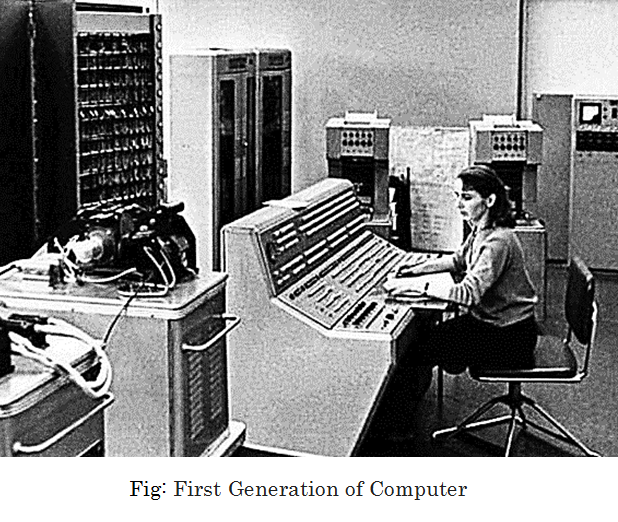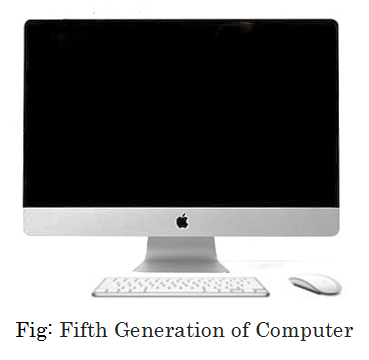Generation of Computer 1st to 5th
Generation of Computer
The history of computers is a computer science topic that is often used to reference the different generations of computers. There is mainly five Generation of Computer in history still now.
First Generation of Computer(1949-1955)
The first electronic computer was developed in 1946 at the University of Pennsylvania in the USA. This computer named as ‘Electronic Numerical and Calculator (ENIAC)‘. The High-Speed Vaccum Tube is the main component of the first generation of computers. First-generation computers have mainly relied on the lowest-level machine language. So, it could only solve a single problem at a point in time.

Characteristics of First Generation Computer
1. High Speed Vaccum Tube
2. Switching Device
3. Stored Program Concept
4. Store Machine Instructions in the Memory
5. Computer Programs are written in Machine language
6. Assembly language
The disadvantage of the First Generation of computers is that those computers are very enormous in size and heavy in weight. Because it is made of thousands of vacuum tubes and occupies large rooms.
Second Generation of Computer (1956-1965)
In these generations of the computer, Transistors are invented, transistors are reliable when compared with a tube. They occupy less space and they require less power. Another major issue in this generation is magnetic memories are invented. The Second Generation of computers uses the first high-level programming languages. It allows programmers to specify instructions in words. At this time, the first versions of COBOL, ALGOL, SNOBOL, and FORTRAN languages were developed.

Characteristics of Second Generation Computer
1. Transistor
2. Magnetic Memory
3. FORTRAN
4. COBOL
5. ALGOL
6. SNOBOL
7. Operating System and Batch Operating System
The disadvantage of Second-generation computers is that those computers have still relied on punch cards for input and hard copies for output. So, it was difficult to move the computers for the reason they were enough large and even some computers needed ACs.
Third Generation Computers(1966-1975)
In these generations of the computer, germanium transistors were replaced by Silicon Transistors, and medium-scale integrated circuits with 100 transistors per chip were developed. In the Third Generation Computers, the invention of IC incredibly decreased the size of computers. It also made it easy for transportation from one place to another. High-level languages such as PASCAL, and BASIC developed in this generation.

Characteristics of Third Generation Computers
1. Silicon Transistor
2. Medium-Scale Integrated Circuit with 100 Transistor per chip
3. Main Memory Size 4 MB
4. Secondary Storage Size 100 MB
5. Time-Sharing System
Fourth Generation Computers(1976-1998)
In these generations of the computer, VLSI (Very Large Scale Integrated Circuit) was developed. UNIX operating system was developed in this time period. In this generation, the first personal computer named “ALTAIR” was developed by the company MITS in 1974. This computer was used Intel Corporation’s 8080 microprocessor.

Characteristics of Fourth Generation Computers
1. VLSI (Very Large Scale Integrated Circuit)
2. INTEL 8080 Microprocessor
3. UNIX Operating System
4. Pentium Processor with MMX (Multimedia Extension)
5. Optimal Disks
6. Computer Networks
7. High-Level Language Such as – C, C++, Java.
Fifth Generation of Computer(1999-till today)
In this generation of computers, it is based on parallel processing hardware and AI (Artificial Intelligence). Artificial intelligence (AI) is the main innovative component of the Five Generation of Computers. AI means the method of making computers think like human beings.

Characteristics of Fifth Generation Computers
1. ULSI (Ultra Large Scale Integrated Circuit)
2. More Storage Space
3. Parallel Processing Hardware
4. Artificial Intelligence
5. Software
6. More Powerful Machine